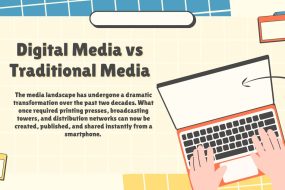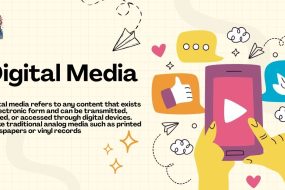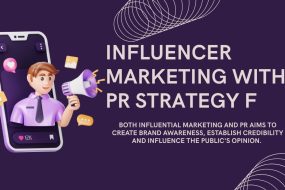
Influencer marketing has evolved from celebrity endorsements to authentic partnerships that can make or break your brand’s social media presence. With 89% of marketers saying influencer marketing ROI is comparable to or better than other channels, getting your collaboration strategy right isn’t just important—it’s essential for staying competitive.
But here’s what most brands get wrong: they treat influencer collaborations like one-size-fits-all advertising campaigns. They send generic pitches, focus solely on follower counts, and expect instant results from short-term partnerships. This approach leads to awkward sponsored content, poor engagement, and wasted marketing budgets.
Successful influencer collaboration requires strategic thinking, authentic relationship building, and a deep understanding of what makes different types of partnerships work. Whether you’re launching your first influencer campaign or looking to improve existing partnerships, these seven proven strategies will help you create collaborations that deliver real business results.
Why Most Influencer Collaborations Fail
Before diving into successful strategies, let’s examine why so many influencer partnerships fall flat. The biggest mistake brands make is approaching influencers with a transactional mindset. They view creators as advertising space to rent rather than partners to collaborate with.
This approach creates several problems. First, it leads to inauthentic content that audiences can spot immediately. When creators feel like they’re just reading scripts, their content loses the genuine enthusiasm that makes influencer marketing effective. Second, transactional relationships don’t build long-term brand advocacy. One-off partnerships rarely create lasting associations between the creator and your brand.
Another common failure point is misaligned expectations. Brands often expect influencer content to look and sound like traditional advertising, but audiences follow creators specifically because their content feels different from ads. When brands over-control the creative process, they eliminate the authentic voice that merging influencer content valuable.
Finally, many brands focus exclusively on vanity metrics like follower count and ignore engagement quality. A creator with 500,000 followers who rarely interacts with their audience will likely deliver worse results than someone with 50,000 engaged followers who trust their recommendations.
Strategy 1: Build Relationships Before Pitching Partnerships
The most successful impressive cooperation begins long before the change in the hands of money. Smart brands invest months in making real relationships with creators whose audience is in line with the target market. This relationship-first approach creates partnerships that give natural feeling and perform better.
Start by identifying the creators whose content naturally is in accordance with your brand values and the interests of the audience. Spend time consuming the content, understand their voice and learn about their society. Look for such creators who already use the same products or discuss topics related to your industry.
Once you have identified potential partners, you can begin to wrap authentically with the content. Leave the thoughtful comments, share your posts when relevant and participate in their social discussions. It’s not about manipulation – it’s about demonstrating real interest in their work.
This commitment period should be for several weeks before considering reaching the collaboration. Increasing this process seems to be opportunistic rather than a relationship centered. Investment in conditions Construction pays dividends through better response rates, high -quality partnerships and more authentic material formation. The most successful impressive cooperation begins long before the change in the hands of money. Smart brands invest months in making real relationships with creators whose audience is in line with the target market. This relationship-first approach creates partnerships that give natural feeling and perform better.
Strategy 2: Master the Art of Micro-Influencer Partnerships
While mega-influencers with millions of followers grab headlines, micro-influencers with 10,000 to 100,000 followers often deliver superior results for brand partnerships. These creators maintain stronger personal connections with their audiences, leading to higher engagement rates and more trusted recommendations.
Micro-influencers typically have more focused niches, which means their audiences are more likely to be interested in specific types of products or services. A food blogger with 25,000 followers who focuses on healthy recipes will probably drive better results for a nutrition brand than a lifestyle influencer with 500,000 followers who covers dozens of topics.
The key to successful micro-influencer partnerships is finding creators whose content naturally fits your products. Look for influencers who already discuss topics related to your industry or use products similar to yours. This natural alignment makes sponsored content feel more authentic and relevant to their audience.
Micro-influencers also tend to be more collaborative and flexible than larger creators. They’re often more willing to try different content formats, participate in longer-term partnerships, and provide detailed feedback about what resonates with their audience. This collaborative approach leads to better content and stronger relationships.
Budget considerations make micro-influencer partnerships especially attractive for smaller brands. You can often work with multiple micro-influencers for the cost of one mega-influencer collaboration, diversifying your reach while testing different audiences and content approaches.
Strategy 3: Create Collaborative Content That Feels Natural

The most effective influencer collaborations don’t feel like advertisements—they feel like genuine recommendations from trusted friends. Achieving this authenticity requires giving creators significant creative freedom while providing clear guidelines about your brand values and campaign objectives.
Instead of providing detailed scripts, offer context about your brand story, key messaging points, and any legal requirements, then trust the creator to deliver content that serves both your goals and their audience’s interests. Creators understand their audience better than anyone, and they know what type of content performs best on their platforms.
Successful collaborative content often integrates products into the creator’s regular content marketing. A fitness influencer might incorporate your protein powder into their weekly meal prep videos, while a tech reviewer might feature your product in their monthly gadget roundup. This integration feels natural because it fits the creator’s existing content patterns.
Consider offering multiple content formats to maximize campaign impact. A single partnership might include an Instagram post, a Stories series, and a YouTube video, each tailored to the platform’s unique audience and format requirements. This multi-format approach increases visibility while allowing creators to experiment with different content types.
Encourage creators to share their genuine experiences with your products, including both positive aspects and any limitations. This balanced approach builds trust with audiences who appreciate honest reviews over obvious promotional content. Authentic testimonials that acknowledge both strengths and weaknesses often convert better than purely positive endorsements.
Strategy 4: Develop Long-term Ambassador Programs
One-off influencer partnerships rarely build strong brand associations or lasting audience relationships. The most valuable collaborations develop over time through multiple touchpoints that allow creators to genuinely integrate your brand into their content naturally.
Ambassador programs create ongoing relationships where creators regularly feature your products in their content over months or years. This consistent exposure helps audiences develop strong associations between the creator and your brand, leading to better recognition and recall when making purchasing decisions.
Long-term partnerships also allow creators to develop genuine expertise and enthusiasm for your products. When influencers have extended experience with your brand, they can speak more authentically about benefits, use cases, and personal experiences. This depth of knowledge translates into more compelling and trustworthy content.
Structure ambassador programs with clear expectations, regular communication, and escalating benefits for consistent performance. Offer increased compensation, exclusive access to new products, and special recognition for ambassadors who consistently deliver quality content and drive meaningful results.
Consider creating tiered ambassador programs that reward different levels of commitment and performance. Entry-level ambassadors might receive products and small payments, while top-tier ambassadors could earn significant compensation, exclusive experiences, and collaborative opportunities on product development.
Regular check-ins with ambassadors help maintain strong relationships and gather valuable feedback. Schedule monthly or quarterly calls to discuss their experience, gather audience insights, and brainstorm new content ideas. This ongoing communication demonstrates your commitment to the partnership beyond just campaign deliverables.
Strategy 5: Leverage User-Generated Content Campaigns
User-generated content (UGC) campaigns tap into the power of authentic customer experiences while leveraging influencer reach to amplify results. These campaigns encourage both influencers and their audiences to create content featuring your products, generating multiple touchpoints and social proof.
Successful UGC campaigns typically revolve around specific hashtags, challenges, or themes that make participation easy and fun. Work with influencers to create campaign concepts that align with their content style while encouraging their audiences to participate actively.
The key to effective UGC campaigns is making participation valuable for both influencers and their audiences. Offer compelling incentives like product giveaways, exclusive discounts, or chances to be featured on your brand’s social media channels. These rewards motivate participation while creating additional touchpoints with potential customers.
Influencers play a crucial role in UGC campaigns by demonstrating participation and encouraging their audiences to join. When creators genuinely engage with campaign themes and show enthusiasm for participation, their audiences are more likely to contribute content. This authentic endorsement drives higher participation rates than purely promotional approaches.
Monitor UGC campaigns closely to identify high-quality content that you can repurpose for your own marketing efforts. With proper permissions, user-generated content can provide authentic testimonials, product demonstrations, and social proof that supports broader marketing campaigns. This repurposing maximizes campaign value while showcasing real customer experiences.
Strategy 6: Focus on Engagement Quality Over Follower Count
Vanity metrics like follower count often mislead brands into partnerships that deliver poor results. Engagement quality—measured through meaningful comments, shares, and genuine audience interaction—provides better indicators of potential collaboration success than raw follower numbers.
Analyze potential partners’ engagement patterns by examining their recent posts. Look for creators who consistently receive thoughtful comments, respond meaningfully to their audience, and generate genuine conversations around their content. High engagement rates combined with quality interactions indicate strong audience relationships.
Pay attention to comment quality rather than just quantity. Creators with audiences that leave detailed, thoughtful comments typically have more engaged communities than those who primarily receive generic responses like “Great post!” or emoji reactions. These engaged audiences are more likely to trust recommendations and take action on sponsored content.
Examine how creators respond to their audience comments. Influencers who regularly engage with their community, answer questions, and maintain conversations demonstrate strong relationship management skills. This engagement indicates they’ll likely present your brand positively and handle any audience questions professionally.
Consider engagement consistency across different content types and posting times. Creators who maintain steady engagement regardless of bad content format or posting schedule typically have genuinely interested audiences rather than artificially inflated metrics. This consistency suggests more reliable partnership performance.
Use engagement rate calculations to compare potential partners fairly. Calculate engagement rate by dividing total engagement (likes, comments, shares) by follower count, then multiply by 100 for a percentage. This metric allows you to compare creators with different follower counts on equal footing.
Learn more about What is Influencer Relations?
Strategy 7: Measure Success Beyond Vanity Metrics

Effective impressive collaboration measurement is outside surface matrix as choices and follow -up. Be aware of indicators that directly connect to business goals such as website traffic, lead generation, sales conversion and improvement of brand awareness.
To trace unique matrix for each collaboration to understand what the drive results are. Use the adapted UTM code for links shared by those affected to measure site traffic and conversion frequency. Create a unique discount code for each partnership to track direct sales attention. Monitor brand hashtag use to measure promotional access and engagement.
Analyze the spirit of the audience and the quality of the comments on how authentic intersects partnerships. Positive public reactions for sponsored materials often indicate successful relationship structure that benefits both sides. Look for the comments that ask questions about products, share personal experiences or express real interest in elements specifically shown.
Consider prolonged brand power measurements as an increase in search volume, mention in social media and brand correction. These indicators often provide better insight into collaborative efficiency than immediate engagement measurements. Track these measures over time to understand the effect of cumulative partnership.
To understand your existing customers to understand how impressive partnerships affect the brand’s opinion. Ask about how you remember specific campaigns, confidence in impressive recommendations and how to influence partnership decisions. This qualitative reaction cooperation provides valuable insight into efficiency.
Conduct regular performance reviews with impressive partners about what works and identify opportunities for improvement. These conversations help to adapt future cooperation
Building Your Influencer Collaboration Strategy
Begin by defining clear goals for your impressive participation. Are you mainly focused on brand awareness, leading, sales conversion or community building? Different goals require separate collaboration methods and measurement strategies.
Identify the creators whose target groups are in line with your target market and whose content is naturally suitable for your products or services. Instead of reaching hundreds of creators with normal places, you need to take into account the construction of real conditions to 5-10 potential partners.
Develop standardized procedures for dealing with impressive conditions, including outreach templates, contract requirements, significant guidelines and payment procedures. The clear system ensures continuous communication and professional relationship management as the program increases.
Create a content calendar that involves regular connection with the content of target creators. Set different times each week to make meaningful comments on your post, share relevant content and stay up to date on your latest projects. This ongoing commitment creates relationships that support successful partnerships.
Install clear internal campaign management procedures, including workflows for material approval, screen tracking systems and regular reporting procedures. These systems ensure a smooth collaboration experience when providing the necessary strategy optimization data.
Your Next Steps for Influencer Success
Successful impressive collaboration requires commitment to authentic conditions, strategic thinking and long -term partnership development. Start by identifying the creators whose work you really praise, and then invest time to understand the content and link their society.
Be aware of creating mutual value instead of purely translated conditions. Think about what you can offer beyond monetary compensation – specific access to other creators in your network, professional development options or connection. These extra benefits often turn out to be more valuable than a timetable.
Remember that the most successful impressive partnership feels like natural collaboration rather than business transactions. By following these strategies and using the preferences of individual creators, you can develop an impressive network that gives average business results when you create a permanent value for everyone.
Brands that succeed in impressive collaboration understand that authentic participation produces better results than transactions. Start building these conditions today, making your impressive marketing effort a strategic profit from scattered campaigns that separate your brand.



















No Comments